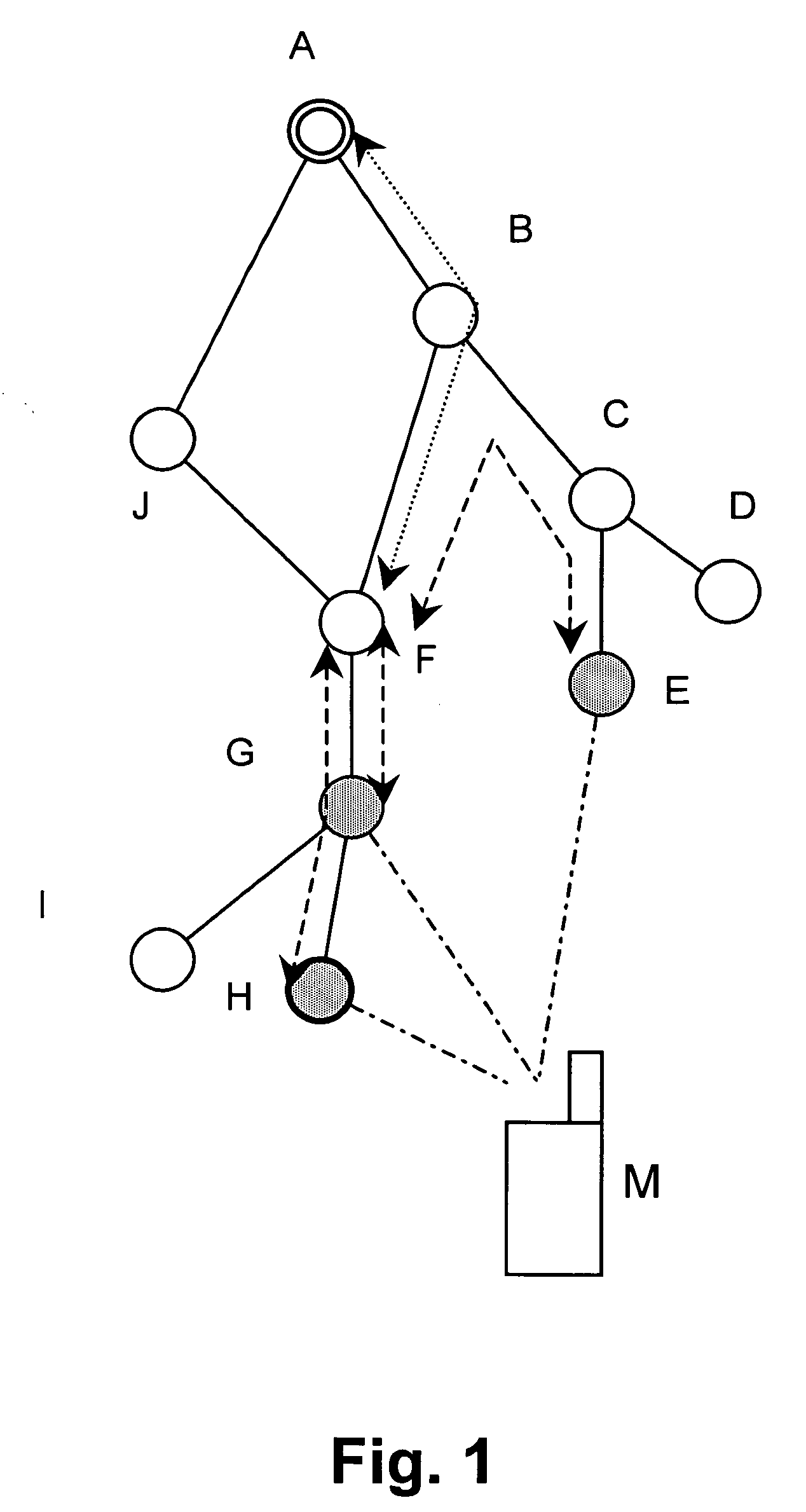Method and network node for selecting a combining point
a network node and combining point technology, applied in the field of network nodes for selecting combining points, can solve the problems of increased delay, no longer centralized for all base stations in the ran, and strict power control requirements so as to achieve efficient network utilization and reduce load at the combining point
- Summary
- Abstract
- Description
- Claims
- Application Information
AI Technical Summary
Benefits of technology
Problems solved by technology
Method used
Image
Examples
Embodiment Construction
[0040] The preferred embodiment will now be described on the basis of a new RAN network architecture for providing access to an IP network.
[0041] According to FIG. 1, a mobile terminal M is connected to a RAN via three redundant transmission paths indicated by respective dash-dot lines. The RAN architecture comprises a plurality of network nodes A to J, wherein the shaded nodes E, G and H are currently connected to the mobile terminal M via the redundant transmission paths. In particular, the network node H indicated with the bold circle is used as the serving base station, i.e. the base station terminating the core network interfaces data stream, and performing Radio Resource Management (RRM) functions like scheduling, power control and the like. In contrast thereto, the other shaded base stations G and E are used as drift base stations providing only resources and radio L1 layer functions for the respective connections to the mobile terminal M.
[0042] In the RAN topology shown in...
PUM
 Login to View More
Login to View More Abstract
Description
Claims
Application Information
 Login to View More
Login to View More - R&D
- Intellectual Property
- Life Sciences
- Materials
- Tech Scout
- Unparalleled Data Quality
- Higher Quality Content
- 60% Fewer Hallucinations
Browse by: Latest US Patents, China's latest patents, Technical Efficacy Thesaurus, Application Domain, Technology Topic, Popular Technical Reports.
© 2025 PatSnap. All rights reserved.Legal|Privacy policy|Modern Slavery Act Transparency Statement|Sitemap|About US| Contact US: help@patsnap.com



